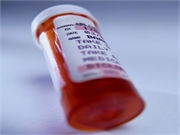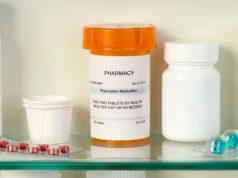Higher opioid dosage prescribed at discharge associated with increased risk for new persistent use
TUESDAY, Aug. 11, 2020 (HealthDay News) — Persistent opioid use is a common concern after cardiac surgery, according to a study published online June 17 in JAMA Cardiology.
Chase R. Brown, M.D., from the University of Pennsylvania in Philadelphia, and colleagues used data from a national administrative claims database (2004 through 2016) to identify 35,817 patients who underwent coronary artery bypass grafting (CABG; 25,673 patients) or heart valve (10,144 patients) procedures. All included patients were opioid-naive within 180 days before the procedure and filled an opioid prescription within 14 days after surgery. New persistent opioid use within 90 to 180 days after surgery was assessed.
The researchers found that persistent opioid use occurred in 3,430 patients (9.6 percent) following cardiac surgery, including 2,609 patients undergoing CABG (10.2 percent) and 821 patients undergoing valve surgery (8.1 percent). There was a lower likelihood for developing persistent opioid use among heart valve surgery recipients (odds ratio [OR], 0.78; 95 percent confidence interval [CI], 0.70 to 0.86), but higher likelihood for women (OR, 1.15; 95 percent CI, 1.03 to 1.26), younger age (OR, 1.02; 95 percent CI, 1.01 to 1.02), congestive heart failure (OR, 1.17; 95 percent CI, 1.06 to 1.30), chronic lung disease (OR, 1.32; 95 percent CI, 1.19 to 1.45), diabetes (OR, 1.27; 95 percent CI, 1.15 to 1.40), kidney failure (OR, 1.17; 95 percent CI, 1.00 to 1.37), chronic pain (OR, 2.71; 95 percent CI, 2.10 to 3.56), alcoholism (OR, 1.56; 95 percent CI, 1.23 to 2.00), preoperative use of benzodiazepines (OR, 1.71; 95 percent CI, 1.52 to 1.91), and preoperative use of muscle relaxants (OR, 1.74; 95 percent CI, 1.51 to 2.02). There was also a significantly increased risk of new persistent opioid use when patients were prescribed >300 milligrams of oral morphine equivalents at discharge versus prescriptions for lower dosages of opioids.
“Centers must adopt protocols to increase patient education and limit opioid prescriptions after discharge,” the authors write.
Abstract/Full Text (subscription or payment may be required)
Editorial (subscription or payment may be required)
Copyright © 2020 HealthDay. All rights reserved.








